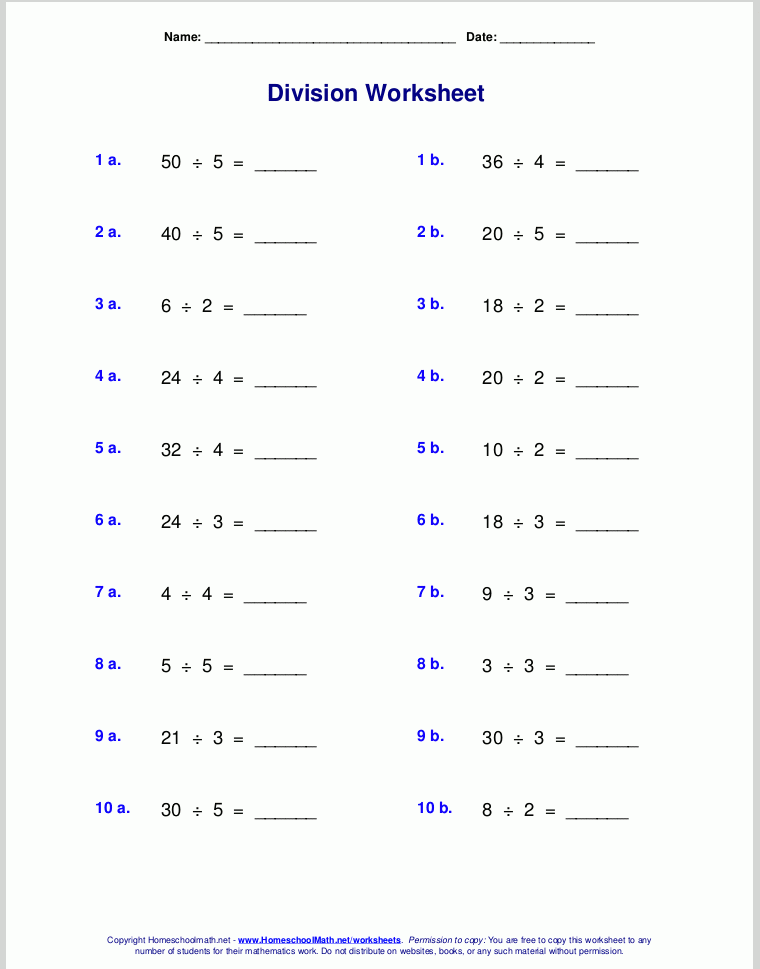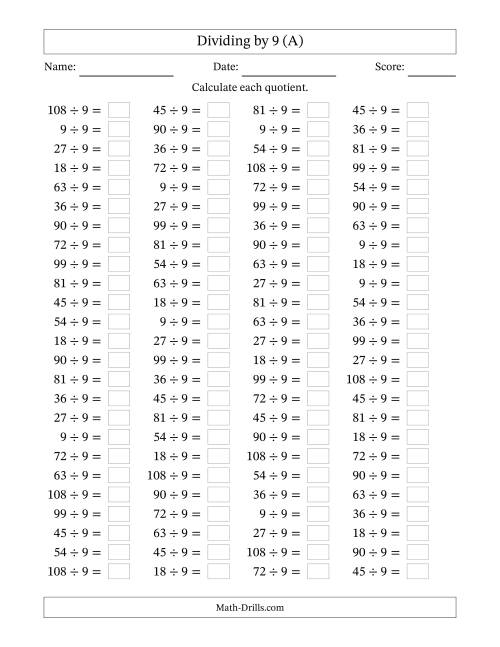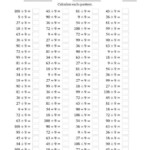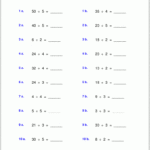Division Fact Worksheets – Worksheets for division are a fantastic way to practice math concepts. They’re an excellent opportunity to master math concepts and prepare yourself for arithmetic tests. Worksheets come in a wide array of formats, which include whole numbers and decimals.
entire numbers
A worksheet on division will help your child get a solid grasp of the fundamental concept of performing mathematical operations with whole numbers. Worksheets on Dividing Whole Numbers are a great way to aid students understand the concept and to practice their division skills. The topics are illustrated with illustrations as well as actual examples.
There are numerous kinds of worksheets for division. This includes worksheets with numerous digits as well as long divisions. Multi-digit integers must be divided by divisors. After that, students calculate the quotient , as well as the remaining. The usual procedure is employed for long division worksheets.
There are worksheets which divide whole numbers using fractions, and ones that divide traditional numbers. This is an excellent method to help students develop their reasoning and make the subject second to them.
Rule of Divisibility
Use division worksheets with divisibility rules to help children grasp the concept of divisibility. They can keep children engaged in learning and help in solving problems related to division. These worksheets assist students in rapidly comprehending and retaining details.
Students are asked to write the numbers that have been divided by the given numbers on a worksheet regarding divisibility rules. These worksheets can be used to improve fine motor skills and decision-making abilities, as well as teach the concept of divisibility. They aid children in tracking their progress and identify gaps in their knowledge.
To determine if a number is divisible by another by dividing it by its digits. The number is then divided by its total digits. This should also include the last digit.
fractional division
It’s very beneficial to make use of worksheets on fractions in order to teach children about fractions. This practice can be used to prepare students for algebra in the later grades.
A majority of students have trouble with fractional division regularly at the classroom. The problem lies in how difficult it can be to grasp. Worksheets on fractions can help children avoid confusion. The worksheets can be used by kids to check their answers. You might find it helpful to provide worksheets for division of fractions in the class.
Worksheets for division of fractions contain images, word problems and diagrams. It is also possible to practice writing fractions by mixing numbers with them. They are available with a variety of levels of difficulty. They are designed for kids with grades that range from third through sixth.
Decimal division
Dividing whole numbers and decimals are similar operations.The only distinction is that there’s no remainder decimal division. For dividing a decimal, the decimal points are moved to the left. You can round down or increase based on which digit is next to the decimal points.
Before you can divide a decimal it is necessary to first figure out the quotient. A decimal quotient is the sum of the divisor’s products and the dividend. It can be multiples of one number, multiples 10 or multiples 100.
Decimal numbers are usually rounded to the nearest decimal position. This is achieved by trailing zeros. For example, 48.8 divided by 4 is a decimal divide because the divisor has a value of 4.88 while the dividend is worth0.4.
To divide large numbers, you can use powers of ten.
Powers of ten is a basic concept that can be used to divide large numbers. You should be able alter the decimal point regardless of whether you are splitting a decimal or a whole number.
When dividing large numbers, it is required to shift the decimal points in the same amount as there are zeros within a power of ten. As a result, the value is raised while the initial number decreases. The decimal point moves to the right if it is smaller than. If it is larger it moves to the left. The exponent will be reduced by the amount that the number changes when it is less than one.
You must subtract the exponents in the divisor from these exponents. This step is described in scientific notation





